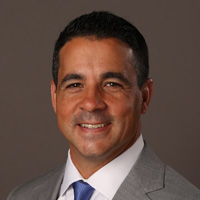Are You Ready to ‘Rothify’ Your Retirement?
Legislation makes Roth accounts more enticing, and savers who mostly prefer to defer face tough decisions. How to choose?


To Roth or not to Roth?
For more than two decades, retirement savers have pondered that question.
Should they get the upfront benefits of contributing to a tax-deferred retirement plan (a 401(k) or traditional IRA, for example) and settle up with the IRS in retirement? Or should they invest after-tax dollars in a Roth IRA or Roth 401(k) now and withdraw their money tax-free in the future?
From just $107.88 $24.99 for Kiplinger Personal Finance
Become a smarter, better informed investor. Subscribe from just $107.88 $24.99, plus get up to 4 Special Issues

Sign up for Kiplinger’s Free Newsletters
Profit and prosper with the best of expert advice on investing, taxes, retirement, personal finance and more - straight to your e-mail.
Profit and prosper with the best of expert advice - straight to your e-mail.
Because there are benefits and drawbacks to each type of account, it can be a tough decision to make. But given the option of paying Uncle Sam now or paying him later, most savers prefer to defer.
For many individuals, the upfront tax break is a major incentive to start and continue saving for retirement. And until fairly recently, the government seemed to be fine with kicking the “tax can” down the road.
Now, though, we’re seeing a shift in momentum, toward what some are calling “Rothification.” In a nutshell, it’s the idea of using legislation (in this case several provisions inside the SECURE 2.0 Act signed into law in 2022) to encourage or require retirement savers to use an after-tax Roth account along with or instead of a pre-tax account.
Why the new attitude?
It seems Congress no longer wants to wait years or decades for you to start paying the taxes due on your retirement contributions. Instead, legislators are looking to generate more immediate tax revenue to fund current and proposed government spending.
What you need to know now
Make no mistake: I’m not anti-Roth or anti-SECURE 2.0. With proper planning, a Roth account can help savers avoid high tax bills when they begin making withdrawals in retirement. And the new law includes several provisions that will enable employers, the federal government and the retirement industry to help Americans save more for retirement.
But there are pros and cons to some of those provisions. Here are a few worth noting:
SIMPLE and SEP IRAs can now accept Roth contributions
SIMPLE and SEP IRAs are for sole proprietors of small businesses. A SIMPLE IRA allows both employees and the business owner to make contributions, while a SEP IRA allows only the business owner to make contributions. Prior to the passing of SECURE 2.0, SIMPLE IRAs and SEP IRAs could accept only pre-tax funds. Now, starting with the 2023 tax year, both SEP and SIMPLE IRAs can offer Roth options.
Having more choices is, of course, a plus. In practice, however, getting SEP and SIMPLE Roth plans off the ground has proven to be difficult, as custodians need time to implement the necessary changes. (I’ve run into this administrative roadblock already with several clients.) As a result, it may be a while before this transition can take effect.
Option to make employer matching contributions on an after-tax basis
Also beginning this year, workplace plans can allow employer-matching contributions to be made on an after-tax (Roth) basis. Again, the option to put some money in a Roth could be helpful to savers who have a large 401(k) balance and a ticking tax time bomb waiting to explode in retirement. But if it sounds too good to be true, it might be.
Those Roth matching contributions will be included in an employee’s gross income — and the money will be taxable in the year it’s received. Employees will have to carefully manage their income tax bracket to avoid paying a higher tax rate. Plus, employers and plan administrators may struggle to transition to this new option.
Requiring a Roth for catch-up contributions
Starting in 2024, all catch-up contributions for workers with wages over $145,000 during the previous year must be deposited into a Roth account. (This year, as in the past, pre-tax or Roth contributions are allowed.)
The Roth requirement is good news in that it may spur older employees to diversify their retirement tax situation. But without some cautious bracket management, workers in their highest-earning years could end up paying a higher tax rate in the present. And that could reduce their incentive to use the catch-up option, an important savings benefit.
Savers can do a rollover from a 529 plan to a Roth IRA
Effective in 2024, 529 college savings plan beneficiaries will be permitted to roll over up to $35,000 penalty-free from their plan to a Roth IRA over the course of their lifetime. That change is sure to please parents (who might be worried about overfunding a child’s account), and it’s obviously an opportunity for young adults to get a great start on saving for retirement.
But without more guidance from the IRS, it’s too soon to tell how this provision will play out in practice.
What’s next?
Over the past few years, there’s been quite a bit of chatter about shutting down so-called “backdoor” Roth conversions and/or phasing out Roth conversions altogether over the next 10 years. Fortunately, neither of these proposals was included in the final version of SECURE 2.0. Their exclusion could be considered just as important as the provisions that did make it into the law. And it’s great news both for high-earners and folks who expect tax rates to increase in the future.
More good news: As opportunities to contribute to a Roth increase, retirement savers may realize there can be benefits to owning both a pre-tax retirement account and an after-tax account. A little research and some thoughtful decision-making — instead of automatically opting for a traditional 401(k) or IRA — could help you maximize every dollar as you build your nest egg.
Just keep in mind that it will be up to lawmakers in the future to fin
d another way to balance their budgets if “Rothification” leads to lost revenue down the road — perhaps by raising taxes or making retirement rule changes of their own.
Profit and prosper with the best of Kiplinger's advice on investing, taxes, retirement, personal finance and much more. Delivered daily. Enter your email in the box and click Sign Me Up.

David Faulkner is a CERTIFIED FINANCIAL PLANNER™ professional with Texas-based Spectrum Advisors (www.spectrumadvisors.net). His focus is on holistic retirement planning and financial awareness, and he is fully licensed in investments and insurance.
-
 5 Types of Gifts the IRS Won’t Tax: Even If They’re Big
5 Types of Gifts the IRS Won’t Tax: Even If They’re BigGift Tax Several categories of gifts don’t count toward annual gift tax limits. Here's what you need to know.
-
 The 'Scrooge' Strategy: How to Turn Your Old Junk Into a Tax Deduction
The 'Scrooge' Strategy: How to Turn Your Old Junk Into a Tax DeductionTax Deductions We break down the IRS rules for non-cash charitable contributions. Plus, here's a handy checklist before you donate to charity this year.
-
 IRS Says You Made a Tax Return Mistake? A New Law Could Help You Fight Back
IRS Says You Made a Tax Return Mistake? A New Law Could Help You Fight BackTax Law Updated taxpayer protections change what the IRS must explain on error notices and how long you have to respond.
-
 I'm a Tax Attorney: These Are the Year-End Tax Moves You Can't Afford to Miss
I'm a Tax Attorney: These Are the Year-End Tax Moves You Can't Afford to MissDon't miss out on this prime time to maximize contributions to your retirement accounts, do Roth conversions and capture investment gains.
-
 I'm an Investment Adviser: This Is the Tax Diversification Strategy You Need for Your Retirement Income
I'm an Investment Adviser: This Is the Tax Diversification Strategy You Need for Your Retirement IncomeSpreading savings across three "tax buckets" — pretax, Roth and taxable — can help give retirees the flexibility to control when and how much taxes they pay.
-
 Could an Annuity Be Your Retirement Safety Net? 4 Key Considerations
Could an Annuity Be Your Retirement Safety Net? 4 Key ConsiderationsMore people are considering annuities to achieve tax-deferred growth and guaranteed income, but deciding if they are right for you depends on these key factors.
-
 I'm a Financial Pro: Older Taxpayers Really Won't Want to Miss Out on This Hefty (Temporary) Tax Break
I'm a Financial Pro: Older Taxpayers Really Won't Want to Miss Out on This Hefty (Temporary) Tax BreakIf you're age 65 or older, you can claim a "bonus" tax deduction of up to $6,000 through 2028 that can be stacked on top of other deductions.
-
 Meet the World's Unluckiest — Not to Mention Entitled — Porch Pirate
Meet the World's Unluckiest — Not to Mention Entitled — Porch PirateThis teen swiped a booby-trapped package that showered him with glitter, and then he hurt his wrist while fleeing. This is why no lawyer will represent him.
-
 Smart Business: How Community Engagement Can Help Fuel Growth
Smart Business: How Community Engagement Can Help Fuel GrowthAs a financial professional, you can strengthen your brand while making a difference in your community. See how these pros turned community spirit into growth.
-
 In 2026, the Human Touch Will Be the Differentiator for Financial Advisers
In 2026, the Human Touch Will Be the Differentiator for Financial AdvisersAdvisers who leverage innovative technology to streamline tasks and combat a talent shortage can then prioritize the irreplaceable human touch and empathy.
-
 How Financial Advisers Can Deliver a True Family Office Experience
How Financial Advisers Can Deliver a True Family Office ExperienceThe family office model is no longer just for the ultra-wealthy. Advisory firms will need to ensure they have the talent and the tech to serve their clients.